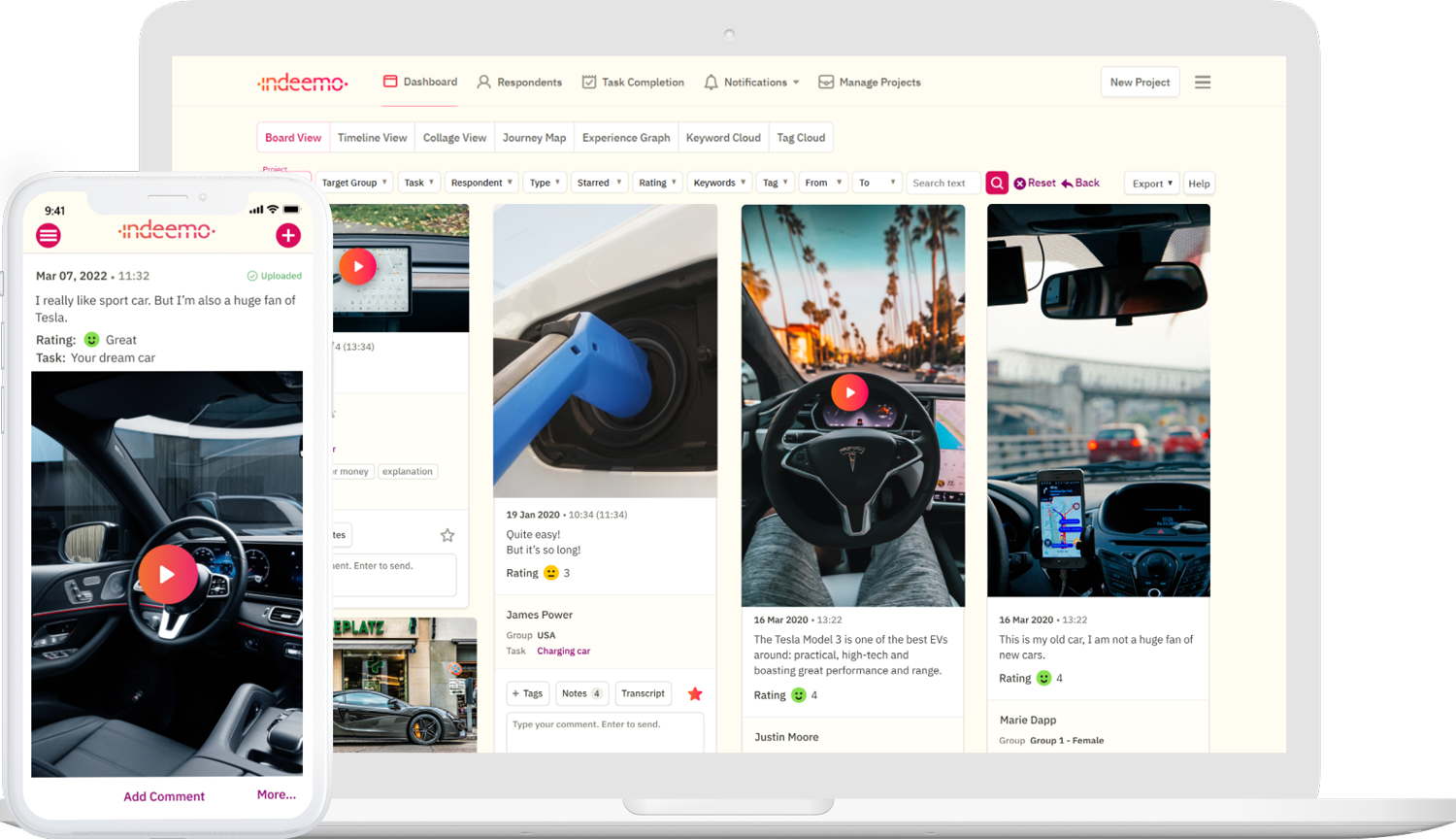Putting the human first is essential to capturing these opportunities. Generative research (often referred to as foundational research, formative research or strategic research) is often viewed as the starting point of customer and/or user discovery. If you are new to generative research we continue reading our guide that describes exactly what it is. This guide also outlines a number of tips to help you conduct effective generative research.
What is Generative Research?
To simply put it, generative research is a range of methodologies and techniques used to develop a deep and rich understanding of customers of a brand and users of a product or service. Generative research is also referred to as exploratory or discovery research. These terms are often used interchangeably.
Developing a rich understanding of the customer experience first requires a deep dive into everything about the human experience. This is where generative research comes into play. The objective of generative research is to uncover unknowns about the lives of customers, their environment, human behaviours, and attitudes towards the areas of interest to your product or service.
Whereas quantitative research methods are used to capture data from a large sample of the population - Generative research often goes hand-in-hand with qualitative methods that help build insights about the why of human experiences. That said, both qualitative and quantitative can be used in tandem. The qualitative insights that emerge from generative research can be used to build and design a robust evaluative research project. Consumer questionnaires can be applied at the evaluative stage of your innovation. This leads us to when exactly then should a team of researchers adopt a generative research approach?
When should you use Generative Research?
We like to view generative research as the foundations and substance of innovation and design. The insights are often rich and contextual. These insights can be carried through each stage of your design of new products or improvements to current services. First, generative research should be integrated if you find that past approaches to design have been product-centric.
To Be Human-centric
Generative research focuses on the customer/user. More importantly, it puts the spotlight on everything about the human experience. When an organisation looks to bring the customer front and centre of product design innovation, generative research is one way to implement this pivot. Generative research should ultimately focus on the lives of people to help you design for their needs.
Further reading
What is a User Experience Research?To Uncover and Understand Problems
At the beginning of the product cycle is usually where generative research will sit. Generative research methods are used to build problem statements. The goal is to conduct generative research that will help you and your team to identify real world problems. Problems that people experience in their day-to-day lives should inform the next phase of your design project. One of the aims of generative research is uncover problems that need to be addressed from the perspective of the customer. Uncovering human needs and problems can then be used to identify new ideas for innovation.
To Capture Context
When we turn our attention to customers, context is everything. One of the aims of generative research is to bring you insights directly into the lives of your customers. Or even potential future customers. Generative research works when you adopt one or more techniques that will capture the context surrounding human needs, desire, motivations and behaviours. Ethnographic observations are often used as a rich fieldwork method to understand the context of people's lives. Context will never be the same for everyone and this is key. Each person you seek to understand will ultimately have different needs. People will perceive a product differently.
CASE STUDY
Using a Mobile Diary Study to Conduct Generative Research.
People will use a product based on past experiences, the environment they live in, and the goals they have. When you and your team are struggling to establish a range of contextual moments that impact the successful use of a product or service, then generative research will help you start uncovering these insights.
How to do Generative Research?
As mentioned previously, Generative research leverages on a range of techniques and methods. These range from ethnographic fieldwork, to focus groups, in-depth interviews, and diary studies. Regardless of the techniques you adopt, there are a number of components to consider.
Be Open-Minded
Generative research should be conducted with an open mind. As one of the goals of this type of exploratory research is to define and outline problem statements - it is important to design your research strategy with little to no anticipated outcomes or hard hitting questions you seek answers to. Generative research should be used to uncover the questions that your team and brand will work to solve innovatively.
Outline an Objective
By outlining a research objective, you should be able to choose the right tools and techniques for your customer discovery. A research objective is your starting point. At times, it can be easy to navigate of course with a project. We may find ourselves asking the wrong questions or recruiting the wrong participants. Always come back to your objective to remind you and your team of the clear goals that you have.
Define the Scope
Generative research, by nature, is exploratory. This means, you are going in with an open-mind without any preconceived outcomes. However, it is still important that you define the scope of your project. Whilst having an open mind is essential, you do not want your objective and goals to be too broad. Remember, you won't be able to solve every problem all at once. The scope of your research project might focus on the digital user experience. Your scope may also look at one or two areas of the customer experience buying journey. Ultimately, defining the scope of your research will keep you and your team focused, allowing for key customer insights to emerge.
The benefits of Generative Research in design
Generative research is an exploratory method that is used to uncover insights and unknowns about people and their everyday lives. At the beginning of a product life cycle, generative research is most valuable. Why? The insights that emerge from this exploratory type of research highlight key areas for product and/or service design. These insights will ensure that you are not designing the wrong product.
Through the means of qualitative research methods, generative research puts the human first. Before the product, people's day-to-day experiences are captured. Contextual moments matter most in generative research. The idea is that we become more human-centric. The qualitative data that emerges from generative research highlights what people think about a product, how they perceive the usefulness or benefits of areas across their purchase journey. Generative research shows us human behaviours in the real world, and puts the spotlight on how people live.
This human-centric characteristic of generative research presents us with a new found empathy for those who matter most to our brand. This is critical when designing the right piece of software for example. To be human-centric means to have empathy for your customers, users, patients, and employees etc. Building empathy can come out of the insights that you uncover from generative research.
The risks of producing the wrong product, or a service that is not needed can be significantly reduced. When we are customer-focused and seek to understand how people live, we uncover pain points across many aspects of their lives. If areas of the purchase journey are flagged as concerns for customers, we can use insights to make improvements to this journey. In a nutshell, generative research will help you and your team avoid designing something that no one really needs.








